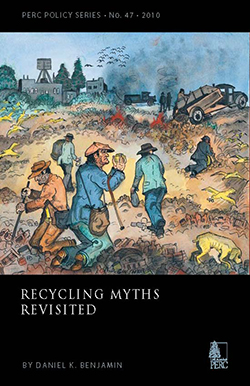Fiction can be more interesting than fact. Researchers at PERC often become interested in environmental issues because of fantastic claims being made about some aspect of the environment. Since environmentalism became big business in the 1970s, many assertions have been made that draw lavish media attention. Most of the outlandish assertions turn out to be false or inaccurate, but that fact rarely draws attention.
Remember Love Canal, the famous industrial site that helped spur passage of the Superfund law? It was reported to be a cauldron of toxic chemicals carelessly dumped in a ditch by an uncaring firm. It caused cancer and birth defects. The truth, as it came out at trial, was different. No serious health issues could be attributed to the chemicals that had been buried decades ago. The only reason there was any problem was because government seized the property from the chemical company and used it for a housing development. The origins of the issue, and the false nature of the hysterical claims, are boring details that do not interest the media or special interests that use such events to press a legislative or regulatory agenda.
In this revised essay, Daniel Benjamin takes us through the common claims asserted on behalf of the multi-billion dollar recycling programs that are generally presumed to be wise public policy. Benjamin applies careful analysis to the claims made over the years about the “need” for mandatory recycling—and finds them to be bogus. He reminds us that before we rush into costly policies presumed to be saving the environment, sound science and analysis of the facts, which are rarely as interesting as fantastic scare stories, are much to be desired in a society that values freedom in markets and personal choice.
This publication is part of the PERC Policy Series of papers on timely environmental topics. This issue was edited by Roger Meiners and Laura Huggins and designed by Mandy-Scott Bachelier.
Download the full report, including endnotes and references.




